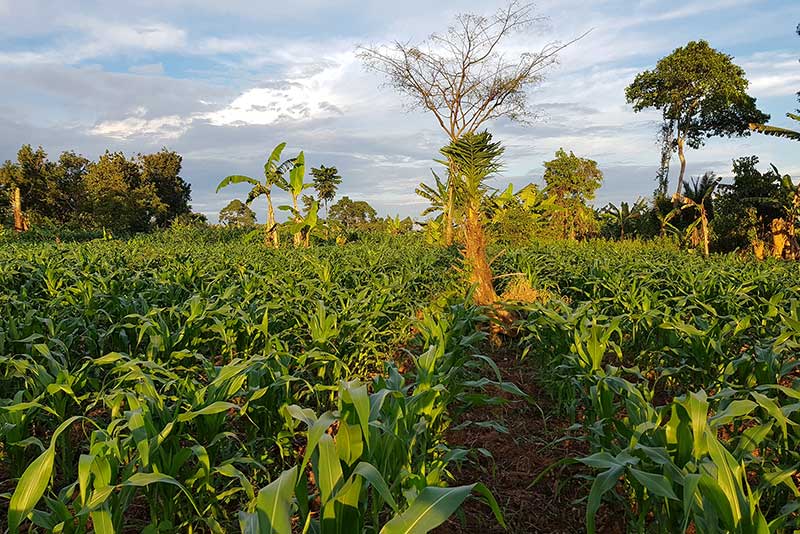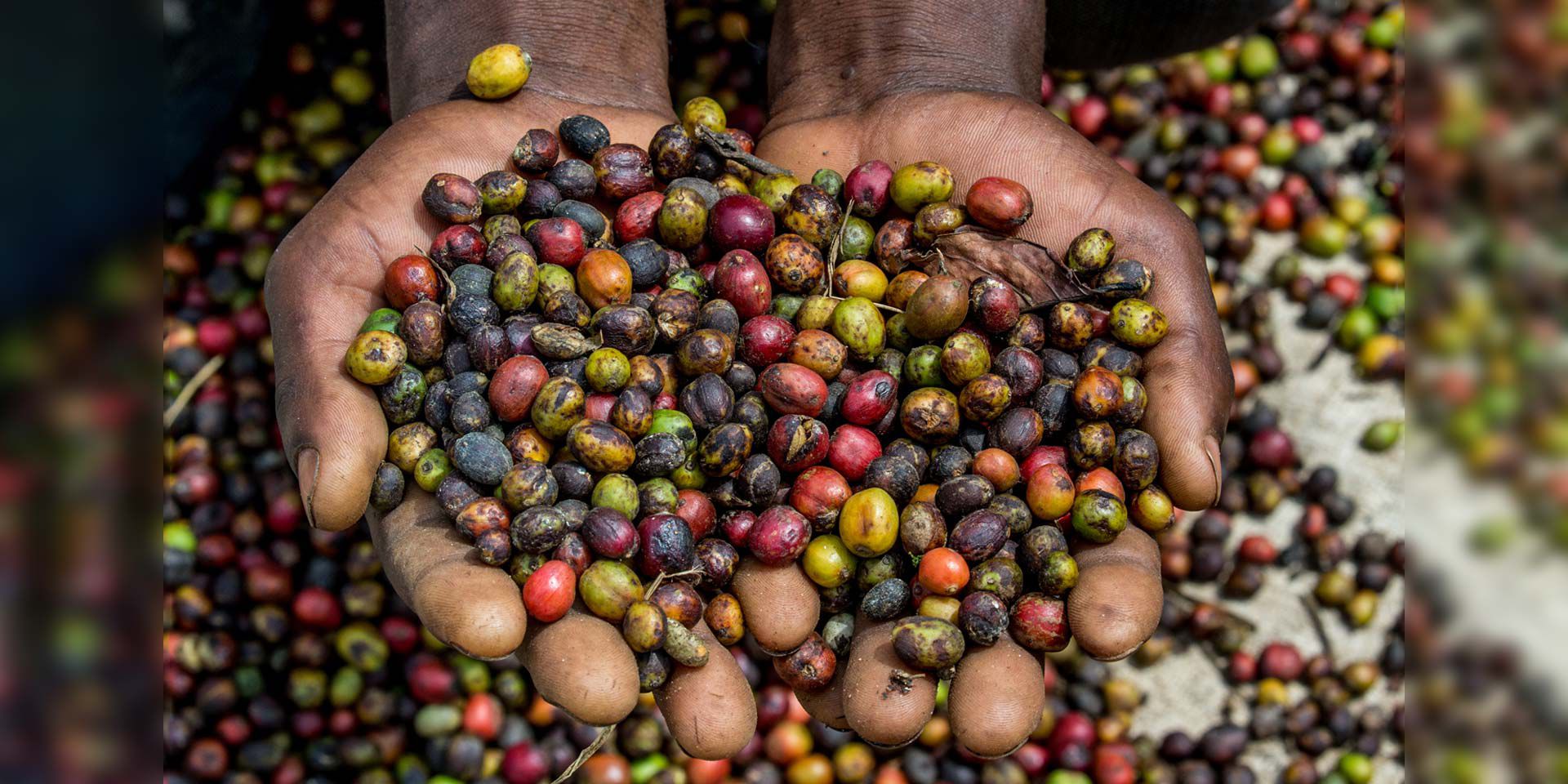Crops have been plentiful in recent months for Kizito Edward, a 29-year-old smallholder who plants maize, coffee, and bananas on his small farm in Buikwe in central Uganda. The relative bounty has allowed him to finish construction on his family home, pay his son’s school fees and even buy a truck—his first-ever piece of farm equipment.
As he sees it, this spell of good luck has just one explanation: Last year, Grainpulse, a Kampala-based agribusiness company, visited his fields to provide training on planting techniques, including best practices for applying the company’s locally-blended fertilizer.
The results have been dramatic. In just one planting season, Edward doubled his maize production and he’s already planning his next big purchase—an irrigation pump—so that he won’t be at the mercy of the often-unpredictable rainfall.
“I have been working very hard,” he said recently, taking a late-afternoon break during planting season, children playing in the background. “Before, I didn’t know how to use fertilizer. Grainpulse has helped us learn new techniques and now my income has improved.”
Last year, IFC, with support from the Private Sector Window of the Global Agriculture and Food Security Program (GAFSP), committed $11 million loan to Grainpulse to support the company’s expansion and strengthen its farmer supply chain. The investment is expected to boost the company’s reach to an estimated 200,000 smallholders like Edward by 2023, up from approximately 20,000—increasing food production and economic growth throughout Uganda. It’s also helping Grainpulse expand to become a “one-stop-shop” for farmers, providing them with multiple services, including fertilizer blending that is optimized to popular local crops like those on Edward’s farm.

Agriculture accounts for about a quarter of Uganda's GDP. Photo: Herbert Musoke/Shutterstock.com
Introducing New Farming Practices
Fertilizer use in Uganda is low, about 9.6 kilograms per hectare annually. This is significantly lower than the 16.2 kilograms per hectare average across sub-Saharan Africa, and the 140 kilograms per hectare average globally.
To introduce it to farmers, Grainpulse works closely with smallholders throughout the planting cycle. In addition to a fertilizer-blending factory—the first in Uganda—it also buys crops such as coffee, maize, sorghum, barley and pulses directly from farmers, helping connect them to markets and export, while also reducing their post-harvest losses.
Grainpulse’s mill currently produces maize flour to make breads and other staples; the IFC-supported expansion will enable Grainpulse to process maize into animal feed as well.
“Agriculture in Uganda is almost entirely based on smallholders and so empowering them is critical to our supply chain sustainability,” said Hannington Karuhanga, Grainpulse Executive Chairman and Founder. “For us to be successful, we need to create an ecosystem by working closely with farmers, providing last-mile solutions and reducing middlemen.”
Grainpulse, formerly known as Savannah Commodities, became a joint venture with K+S AG, a global potash and salt company headquartered in Germany, in September 2018.
Protecting Vulnerable Farmers
Agriculture employs an estimated 70 percent of the country’s labor force and accounts for about a quarter of its GDP. But Ugandan smallholders are particularly vulnerable: Rainfall is unpredictable and dry spells can be disastrous for farmers without irrigation systems. The recent swarm of locusts has also decimated many crops, while COVID-19 has restricted movement even in rural areas. The result is that many farmers are having a harder time getting to stores to purchase inputs or recruit additional workers to assist during planting season, which is now in full swing.
Halima Nanjego, who farms cassava, sweet potatoes and maize on her half-acre farm, says life has been transformed since Grainpulse taught her streamlined planting techniques. “I have only a small area of land, but I can produce so much more,” she says. “And I can use the extra money to invest in my small shop and improve my family’s well-being.”
Last year, the company’s mobile farmer training center—a retrofitted Mercedes truck equipped with lab for soil testing analysis, as well as a fold-out tent where upwards of 100 farmers can attend training sessions—stopped at Nanjego’s farm. The truck has traveled across the country, crisscrossing rural communities and hard-to-reach areas to teach farmers how to prepare land, apply fertilizer, use seeds, and manage diseases and mold like aflatoxin. With support from GAFSP, the company also distributes training manuals and informational leaflets that provide easy-to-use information on streamlined techniques, as well as financial literacy training.
“Farmers are doubling their yields and with continued training on good agricultural practices, they can improve even more,” says Hilary Rugema, Grainpulse’s lead agronomist. “There’s much more to learn about timely land preparation, planting, fertilizer application, spacing, weed management, and pest and disease control.”
This is critical, according to Janina Kaiser, Grainpulse’s Director of Strategy and Finance and K+S’s Head of Strategy and Innovation for sub-Saharan Africa. Kaiser says that working closely with smallholders does more than just secure Grainpulse’s financial future. “Part of our business ethos is getting farmers to embrace new agricultural inputs and techniques so that together, we can sustain Uganda’s food supply and food security,” she says. “It’s a win-win for everyone.”
Join the conversation: #IFCimpact
Published in May 2020
